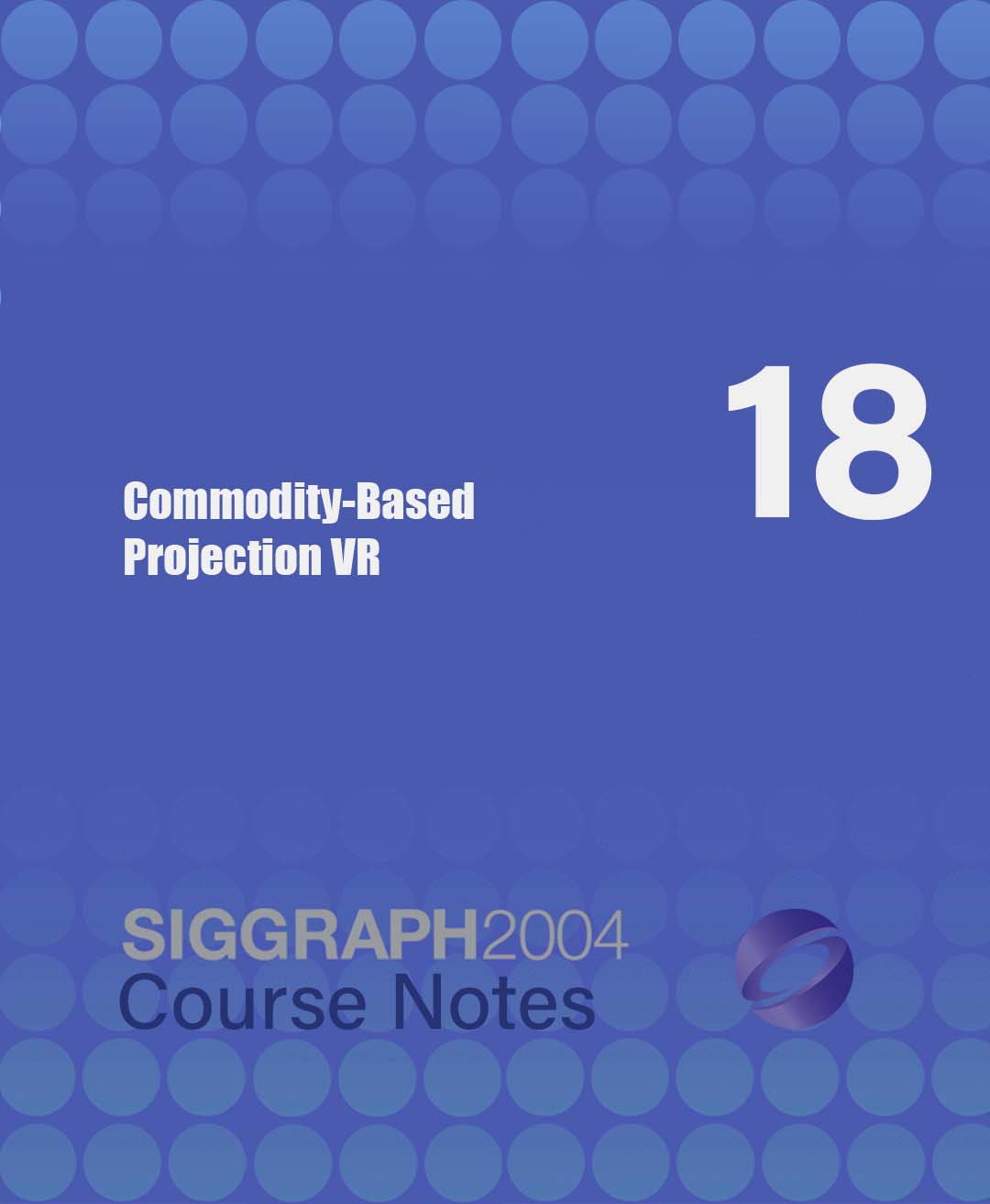“Commodity-Based Projection VR” by Pape, Anstey and Sherman
Conference:
Type(s):
Entry Number: 18
Title:
- Commodity-Based Projection VR
Course Organizer(s):
Presenter(s)/Author(s):
Abstract:
Prerequisites
Some familiarity with programming interactive graphics; specific experience with virtual reality is not required.
Intended Audience
People who are interested in applying virtual reality to their work in visualization, art, education, etc. but do not have the budget for a packaged, commercial system.
Description
How to build your own commodity-based, projected virtual reality system, and why you might want to do such a thing. This course describes in detail how the presenters have constructed their systems and the options available for various elements (stereoscopic graphics, video projection, audio, tracking, software). It also summarizes how these systems have been used, both in classroom and public environments.
The ultimate possibility is that many more people will have access to interactive, virtual reality hardware and will be able to create their own new applications for it. Immersive, interactive VR is a tool with hypothetically limitless uses, but it is often regarded as something strictly for large research labs and corporations that can afford it. This is not the case; VR can also be used by schools, museums, artists, and others. For these people, this course provides guidance in putting together their own systems.
Major topics include: polarized stereoscopic display, alternative methods of stereo, types and configurations of projectors, types of PC graphics cards, available 3D tracking systems (both commercial and experimental), other input devices, sound hardware, and open source software to drive it all. The presentations summarize the results of years of experience and experimentation with projection-based VR. Pointers to where one can actually obtain all the components are also provided, along with examples of applications that have been created by students and faculty at two universities, and by independent artists.




